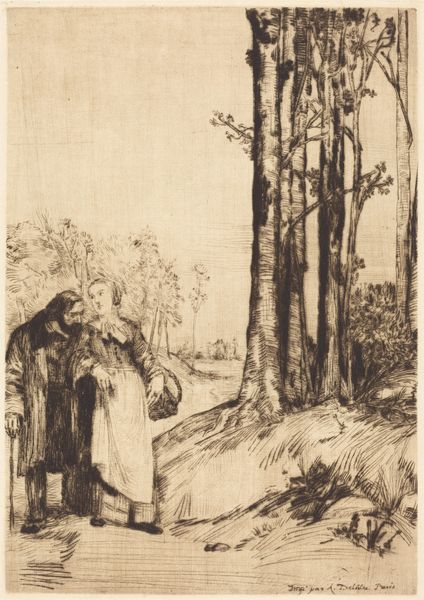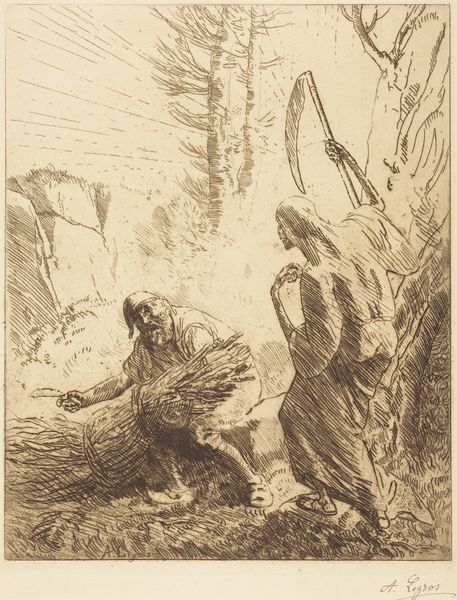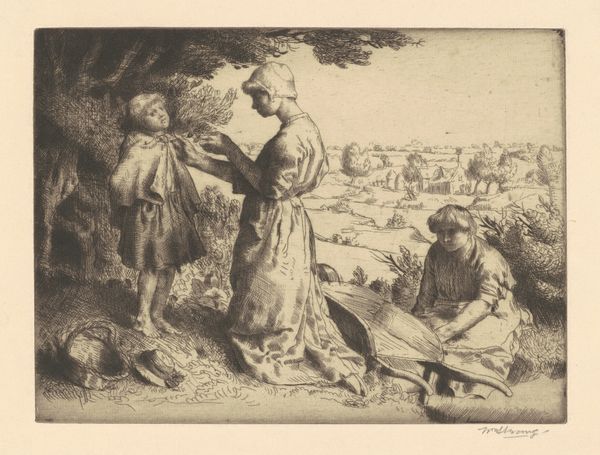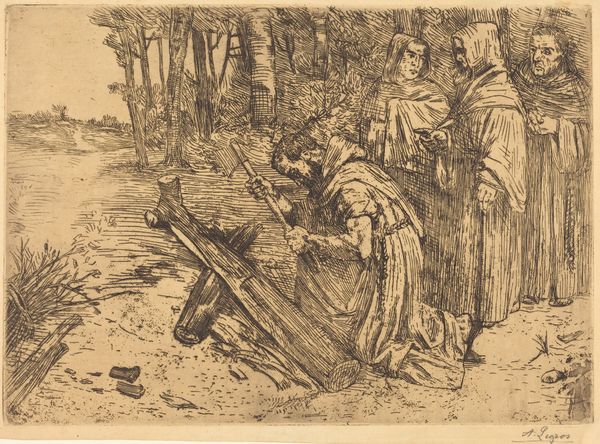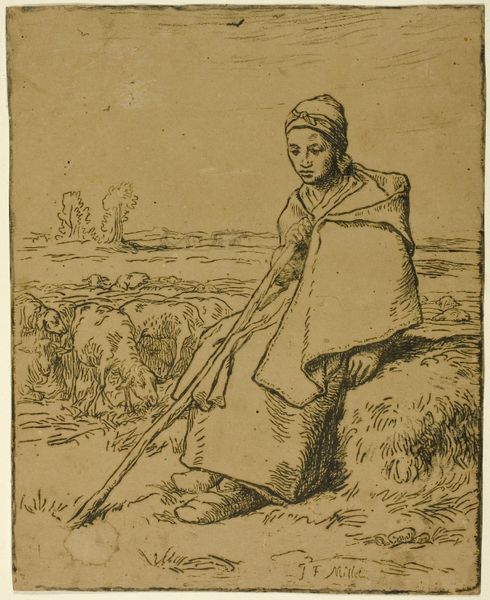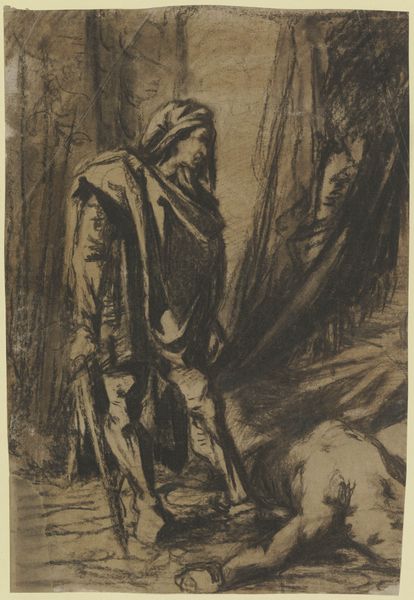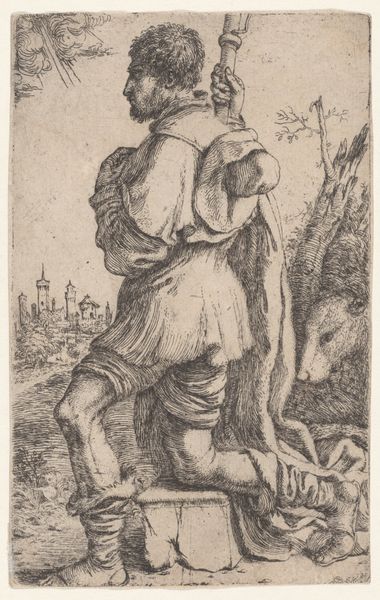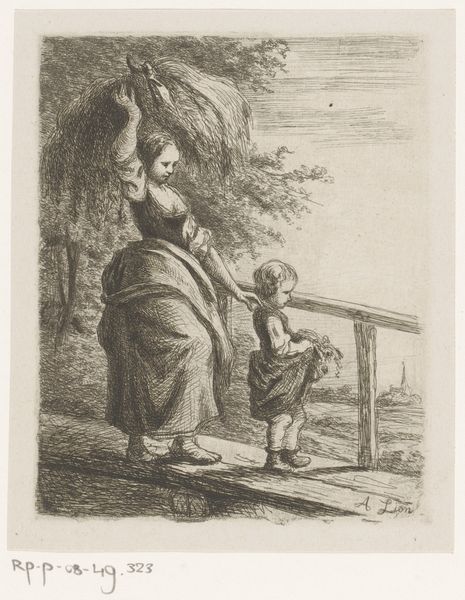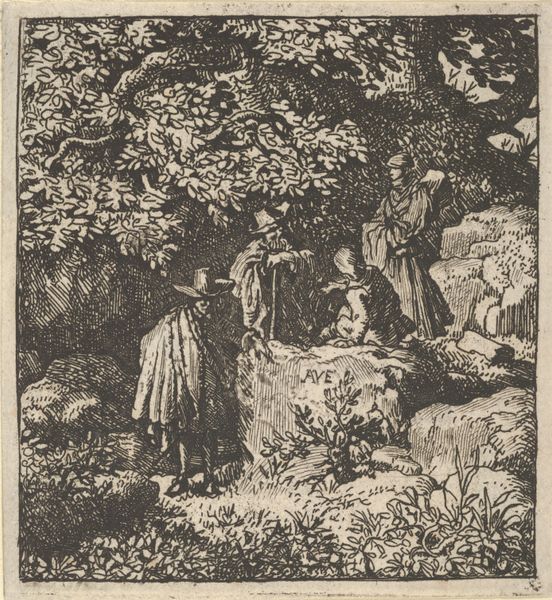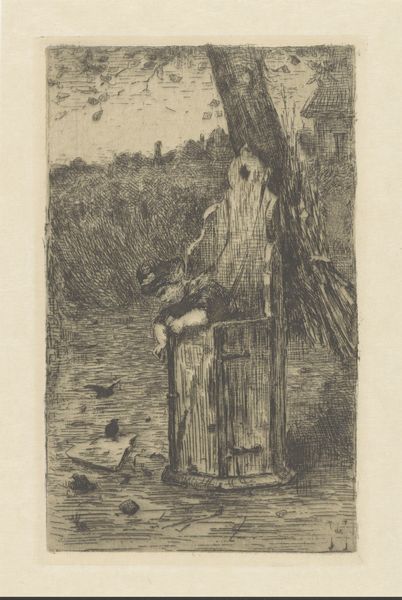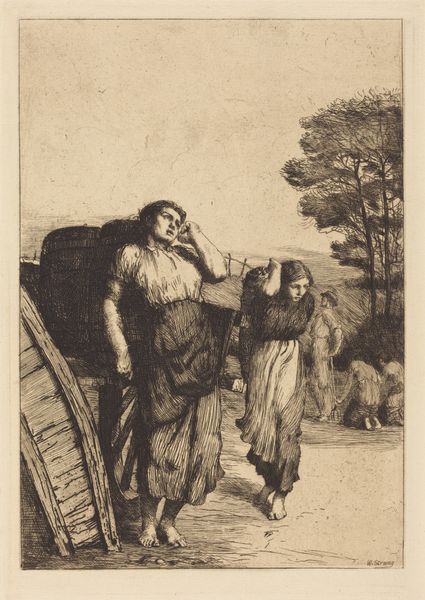
Dimensions: image: 12 1/2 x 9 1/4 in. (31.8 x 23.5 cm) sheet: 16 3/8 x 12 7/16 in. (41.6 x 31.6 cm) frame: 21 x 16 in. (53.3 cm)
Copyright: Public Domain
Editor: Here we have Jean-François Millet’s "Shepherdess Knitting," an etching from 1862 currently at the Metropolitan Museum of Art. I'm immediately struck by the shepherdess's somber posture. It seems like such a solitary existence. How do you interpret this work within its historical context? Curator: Millet’s portrayal resonates deeply within the sociopolitical landscape of 19th-century France. Can we view her solitude not just as personal, but as symbolic of the isolation and alienation experienced by the rural working class, particularly women, amidst rapid industrialization? Consider how Realism as a movement sought to legitimize the lives and labor of those often overlooked. Editor: That's interesting. So, her everyday task, knitting, becomes more than just an activity; it’s a representation of labor. Does the medium – etching – also contribute to this message? Curator: Absolutely. The print medium itself democratized art, making images of rural life accessible to a broader audience. And the deliberate roughness of the etching lines emphasizes the harshness of rural labor, wouldn’t you say? Millet seems to critique the romanticized view of pastoral life often presented by the aristocracy. Is this shepherdess idealized or, rather, presented in a more "realistic" light? Editor: I see what you mean. She’s not idealized at all; she looks weary, burdened. It makes me think about the intersection of class and gender – how women in the working class faced specific hardships. Curator: Precisely. We must ask: What narratives are silenced or amplified in the representation of rural women? And how can this image incite dialogue about labor exploitation even today? Editor: It’s amazing how much social commentary can be packed into one image. I initially saw only a lone figure, but now I see layers of meaning concerning labor, gender, and class. Curator: Indeed. Art provides us the opportunity to interrogate the past and hopefully learn some lessons to forge a more equitable future.
Comments
No comments
Be the first to comment and join the conversation on the ultimate creative platform.
